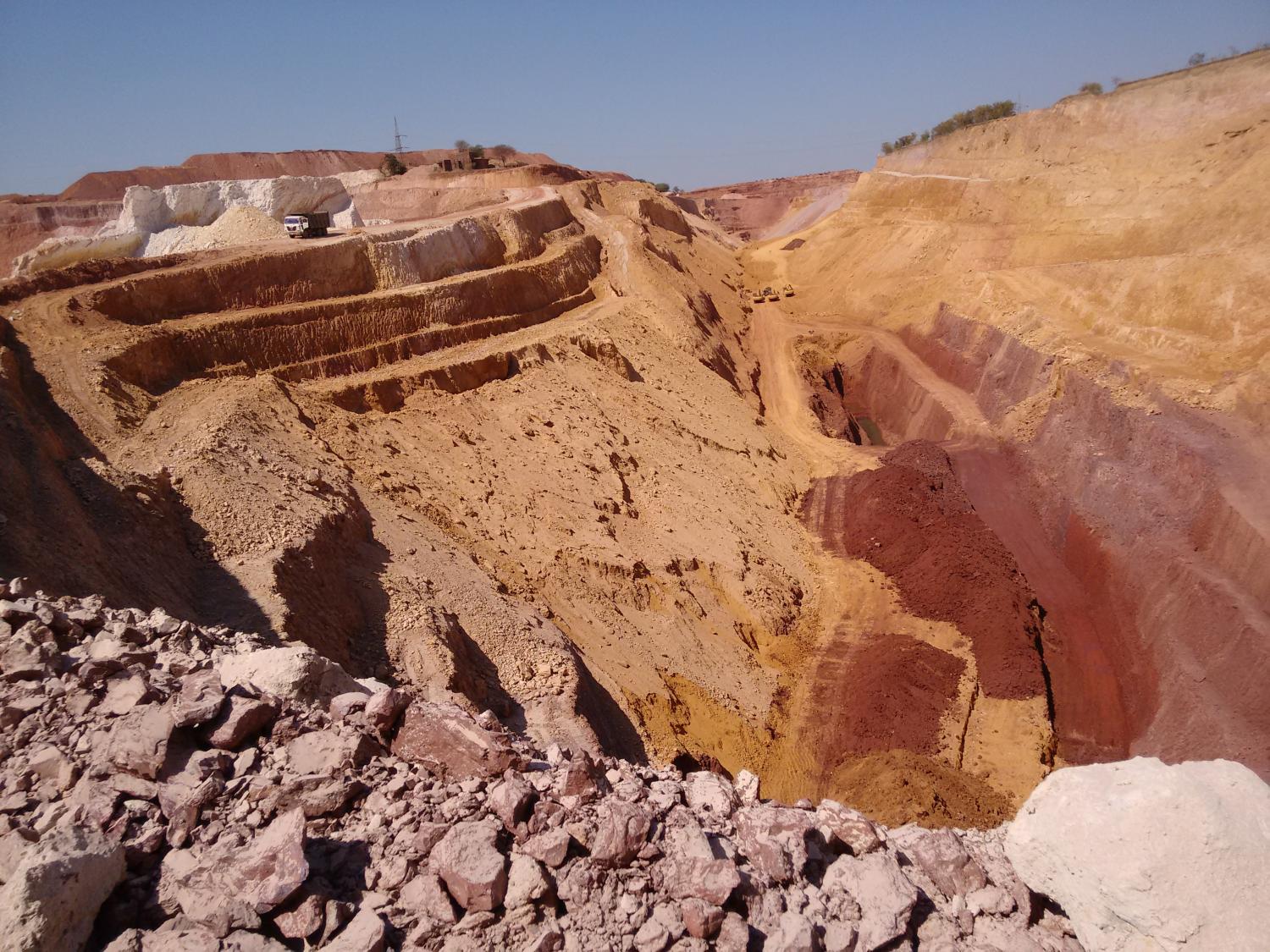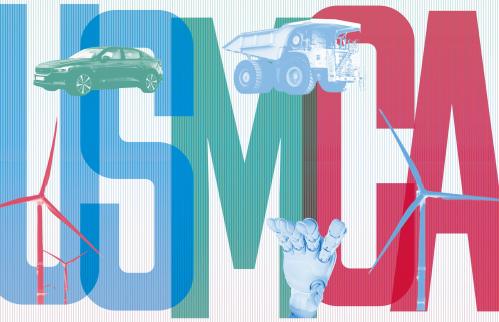Content from the Brookings Institution India Center is now archived. After seven years of an impactful partnership, as of September 11, 2020, Brookings India is now the Centre for Social and Economic Progress, an independent public policy institution based in India.
Introduction
While there is rich extant literature on India’s dependence on and its long-term need for natural gas and coal, there is not a similar understanding of non-fuel minerals, particularly the critical minerals. A study by the Department of Science and Technology and the Council on Energy, Environment, and Water (DST-CEEW, 2016) points out that there isn’t enough research in India on ensuring mineral resource security for the manufacturing sector.[1] The study looked at 49 non-fuel minerals, including rare earth minerals, and assessed the impact of critical minerals on manufacturing sector due to supply constraints.[2]
The criticality of non-fuel minerals has been evaluated through considering economic importance and the supply-side risks. The economic importance of a non-fuel mineral is implicitly based on a) use of the mineral across various manufacturing sectors, and b) value addition by these sectors to the manufacturing GDP. “Even if a mineral is used in small quantities, in a high-value-add manufacturing sector it can be more critical as compared to a mineral used in large quantities in a low-value-add manufacturing sector,” says the DST-CEEW (2016) study. The supply-side risks for a mineral are based on domestic endowment, geopolitical risks of trade, substitutability and recycling potential. The study identifies 13 minerals which would become most critical by 2030. Six of these were critical even in the reference year 2011.[3] The study recommends that India should undertake institutional reforms outlined in the National Mineral Exploration Policy, NMEP 2016, including creation of a not-for-profit National Centre for Mineral Targeting (NCMT), enhanced exploration and R&D in mining and mineral processing technologies, and strategic acquisition of mines abroad and signing of diplomatic and trade agreements.[4]
Critical minerals have highly complex global supply chains. Their production is subject to a high degree of monopoly. Hence, the availability of these minerals faces high levels of supply risks. The International Energy Association (IEA, 2020) has identified that China produces 63% of world’s output of rare earth elements (REEs) and 45% of molybdenum. More than 70% of cobalt is mined in the Democratic Republic of Congo, with China having a majority ownership of these mines. Australia produces 55% of world’s lithium with China as its major importer. South Africa mines 72% of world’s platinum output (International Energy Agency (IEA) Report, 2020).[5]
The IEA Report (2020) cautioned that the future availability of clean energy would require reliable global supply chains of critical minerals as well as availability of equipment like solar panels, wind turbines and electric vehicles. There is a need to analyse the global challenge of accelerated transition toward clean energy in case the global supply chains get fractured during the post-COVID-19 era. Efficient and fast-charging batteries need embedded use of lithium, cobalt and nickel. Copper is an important conductor of electric currents. Some of the REEs, like neodymium, are used to make powerful magnets as major components of wind turbines and electric vehicles.
The supply risks of critical minerals may occur due to domestic factors and interruptions in international trade. Domestic factors include unrest and civil wars, environmental factors, mining disasters and political conflicts within the producing countries. Risks also arise from trade wars. It was in 2010 that China suspended exports of REEs to Japan for 59 days. The impact was such that the prices of rare earth oxides increased in the range of 60% to 350% and returned to the pre-dispute levels after a year. China is typically not considered as a major resource exporter and yet is world’s largest producer of 18 critical minerals.[6] China holds 85% of the world’s capacity to process REEs into material inputs required for manufacturing various high-tech products. About four-fifths of REEs imported by the United States originate from China.[7] The post-COVID-19 slowdown in manufacturing activity is likely to lead to major changes in trade of REEs between China and the U.S., lithium between Australia and China, and cobalt between Democratic Republic of Congo and China. China thus plays a crucial role in the global supply chains of critical minerals including REEs.
The IEA Report (2020) provides a description of key challenges around global supply of select critical minerals. A justified tightening of labour and environment standards in Congo might impact cobalt production and downstream supply chains. In the case of nickel, there has been a track record of delays and cost overruns in new mines. Indonesia, the largest producer of nickel, has banned its exports. China is the largest producer of REEs and dominates value chains across mining, processing and producing magnets.
COVID-19 has been a wake-up call for monitoring the critical mineral supply chains for ensuring adequate production of clean energy as well as high-tech aviation and IT equipment. Disruptions in supply chains can get exacerbated if battery and electronic vehicle production takes a hit in Japan, South Korea and some other countries. IT equipment and IT-enabled services shall become important means of doing business when physical movement of people is restricted for in-person meetings and events during the post-COVID-19 era.
The 21st century needs of clean energy and other high-tech equipment are proving to be a challenge due to the economic slump caused by COVID-19. India needs to undertake serious research and build a policy framework of being self-reliant in clean energy and high-tech equipment by acting fast on exploration and excavation of critical minerals and setting up investments in the downstream value chain of manufacturing requisite equipment at home.
New horizons of growth: Need for critical minerals and downstream products
The Indian economy had started slowing down even pre-COVID-19, in 2018-19 and 2019-20. The growth has been less than 4.5% in 2019-20 and is likely to be 2% or even less in 2020-21. Given that the global economy is going to slow down, the Indian economy needs a big boost from domestic factors which aim at making India self-reliant.
There are some major pending reforms to be adopted in the mining sector. The sector can act as a catalyst for traditional as well as high-tech manufacturing and hence boost India’s GDP and provide jobs, not only in the mining sector, but in many downstream sectors.
In his speech on May 12, 2020, Prime Minister Narendra Modi expressed serious concerns about the devastating impact of COVID-19 on India and the world.[8] He announced a stimulus package of Rs. 20 trillion to revive India’s economy. India would adopt Atmanirbhar Bharat Abhiyan (Self-Reliant India Movement) through boosting local production. Consequently, the Finance Minister announced the details of the stimulus through five different tranches. The Part-4 tranche, announced on May 16, 2020, refers to the ‘New Horizons of Growth’, which focused on the upgradation of industrial infrastructure. Incentives shall be provided for promotion of “New Champion Sectors” including manufacturing of solar photovoltaic (PV) and advanced cell battery storage. It addresses various policy reforms and initiatives in sectors such as mining, defence production, aircraft maintenance, civil aviation, space activities, power and atomic energy.[9]
The announcements on reforms in the non-fuel minerals sector are extremely crucial for ensuring the success of manufacturing sector as well as integrating “assemble in India for the world” into the larger “Make in India” initiative. The major new announcements include:
- Introduction of a seamless composite exploration-cum-mining-cum-production regime
- 500 mining blocks would be offered through an open and transparent auction process
- Introduce joint auction of bauxite and coal mineral blocks to enhance the aluminium industry’s competitiveness
- Remove distinction between captive and non-captive mines to allow transfer of mining leases and sale of surplus unused minerals, leading to better efficiency in mining and production
- Ministry of Mines is in the process of developing Mineral Index for different minerals
- Rationalisation of stamp duty payable at the time of award of mining leases
The mining sector reforms would help fulfill India’s commitment to a clean and sustainable energy future as well as ensuring availability of other high-tech equipment including solar panels, electric vehicles, IT and aviation equipment. There is a clear and urgent need to develop value chains of critical minerals, including lithium, cobalt, nickel, manganese and rare earth elements (REEs).
Identifying activities: Self-reliant KABIL India
India has excellent geological potential for many critical minerals including REEs. These include minerals like lithium, tantalum, niobium, titanium, vanadium, nickel and platinum group elements (PGE) and some others. REEs can be sourced from ilmenite and monazite from beach sand and from alkaline rocks and cogenetic carbonatite complexes.[10] While India has developed some expertise in extracting and processing some REEs, mainly monazite, the manufacture of downstream products has not yet happened.[11] The government is working on attracting investments by foreign companies for producing solar panels, lithium batteries, solar charging infrastructure and other advanced technologies in India, with the underlying objective of moving towards clean energy.
One of the major steps to ensure supply of critical minerals, mainly in the context of energy security and the national mission on Electric Mobility, was taken on August 1, 2019. An expert committee for exploration and procurement of required critical minerals was set up in consultation with the Ministry of Mines, Government of India. The committee would examine domestic reserves as well as possible tie-ups with the mining sectors of other countries, particularly for sourcing cobalt and lithium from Australia, Argentina and Bolivia. A joint venture company, named Khanij Bidesh India Limited (KABIL)[12], would be set up as a joint venture of three central public sector enterprises, viz. National Aluminium Company Limited (NALCO), Hindustan Copper Limited (HCL) and Mineral Exploration Company Limited (MECL) in the ratio of 40:30:30. KABIL would work towards ensuring a consistent supply of critical minerals with attention to import substitution not only for energy security but also for sectors such as defence, aviation and space research. It would also work towards acquisition, exploration, mining and processing of strategic minerals in other countries for ensuring adequate supplies to the domestic markets. This would be done through G2G collaboration or strategic acquisitions or investments in the exploration and mining assets in foreign countries.[13]
As a follow-up of a virtual summit meeting between the prime ministers of the two countries, India and Australia have signed a Memorandum of Understanding on June 4, 2020 for supplying critical minerals to India. These include lithium, cobalt, zircon, antimony, tantalum and rare earths.[14]
Reforms in the mineral sector: The way forward
The National Mineral Policy (NMP) 2019 had put forward a vision for accelerated growth of production of non-fuel minerals.[15] It highlights that exploration and extraction should boost the country’s economic development through making in India and reducing import dependence. It recommends a regulatory environment that is conducive for “ease of doing business with simpler, transparent and time-bound procedures for obtaining clearances”, along with security of tenures with rights of transferability of concessions. Efforts shall be made to prospect and explore minerals where India has the geological potential, but poor resource and reserve base. These include “energy-critical minerals, fertilizer minerals, precious metals and stones, strategic minerals and other deep-seated minerals which are otherwise difficult to access and for which the country is mainly dependent on imports.”
The recent set of Atmanirbhar reforms of the mineral sector announced by the Finance Minister under the Part-4 of the post-COVID-19 stimulus package are likely to give a big boost to exploration of all the minerals, including critical minerals.
While attention needs to be paid to efficient exploration and allocation of leases to all non-fuel minerals, critical minerals including REEs need focused attention. KABIL should consult with private sector players, from mining as well as manufacturing, to seek useful and practical suggestions for becoming self-reliant in critical minerals and downstream products now, and in future.
As recommended by the DST-CEEW study, a not-for-profit National Centre for Mineral Targeting (NCMT) should be set up, exploration and R&D in mining and mineral processing technologies should be enhanced and due consideration should be given to strategic acquisition of mines abroad and signing of diplomatic and trade agreements.
While exploration and extraction of critical minerals is important, it can be accomplished commercially only when the entire value chain is developed simultaneously, from exploration to mining, to extraction, and product development. Investors should be incentivised to make risky investments with assurance of the security of title and tenure.[16]
Improving the post-leasing clearance mechanism is one of the most important reforms for making mining activity efficient. Instead of getting separate environmental and social clearances, evaluation may be done on the basis of one integrated impact assessment, viz. environment and social impact assessment report (ESIA). This comprehensive report would factor in the environment, forest and biodiversity, and the local community aspects of the mining project under consideration.[17]
A much-needed single regulatory authority has been envisioned in the National Mineral Policy (2019): “A unified authority in the form of an inter-ministerial body under Ministry of Mines, with members like Ministry of Coal, MoEarth Sciences, MoEFCC, Ministry of Tribal Affairs, Ministry of Rural Development, Ministry of Panchayati Raj, Ministry of Steel, including state governments, shall be constituted to institutionalise a mechanism for ensuring sustainable mining with adequate concerns for environment and socio-economic issues in the mining areas, and to advise the Government on rates of royalty, dead rent, etc.”. It would be ideal if the authority executes its work to facilitate optimum development and utilisation of mineral resources.
In a previous piece, we have argued that to become “a globally competitive and self-reliant sustainable mining hub, India must ensure mineral security for the 21st century, provide inter-generationally optimum resources to the states’ exchequers and adequate returns to the mining companies, rely on state-of-the-art technology and create additional jobs, while ensuring environmental sustainability and welfare of the affected communities.”[18] It is only then that the mining sector can become a true catalyst for growth and development.
[1] Gupta, Vaibhav, Tirtha Biswas and Karthik Ganesan (2016), Critical Non-Fuel Mineral Resources for India’s Manufacturing Sector: A Vision for 2030 (DST-CEEW): https://www.ceew.in/sites/default/files/CEEW_Critical_Non_Fuel_Mineral_Resources_for_India_Manufacturing_Sector_Report_19Jul16.pdf
[2] Indian Bureau of Mines, Ministry of Mines (2018), Indian Minerals Yearbook, 2016, Rare Earths: http://ibm.nic.in/writereaddata/files/01242018120048Rareearths%202016(AdvanceRelease).pdf
[3] Minerals critical in 2011 as well as 2030 include chromium, limestone, niobium, rare earths (light), silicon and strontium. Minerals that would become critical by 2030 include rhenium, beryllium, rare earths (heavy), germanium, graphite, tantalum and zirconium.
[4] Ministry of Mines (2016), National Mineral Exploration Policy: Non-Fuel and Non-Coal Minerals: https://mines.gov.in/writereaddata/Content/NMEP.pdf
[5] Kim, Tae-Yoon and Milosz Karpinski (2020), Clean energy progress after the Covid-19 crisis will need reliable supplies of critical minerals, International Energy Agency (IEA): https://www.iea.org/articles/clean-energy-progress-after-the-covid-19-crisis-will-need-reliable-supplies-of-critical-minerals
[6] Wilson, Jeffery (2019), Critical Minerals for the 21st Century Indi-Pacific, PerthUSAsia Centre: https://perthusasia.edu.au/getattachment/Our-Work/2019-Perth-USAsia-Centre-Annual-Report-(2)/ITZ-Issues-Brief.pdf.aspx?lang=en-AU
[8] https://www.youtube.com/watch?v=P4QjOhu9eIQ
[9] Finance Minister, Atmanirbhar Bharat, Part-4, May 2020, New Horizons of Growth, Ministry of Finance: http://164.100.117.97/WriteReadData/userfiles/AatmaNirbhar%20Bharat%20Full%20Presentation%20Part%204%2016-5-2020.pdf
[10] Geological Survey of India , Ministry of Mines (2013), General Information Dossier for Rare Earth Elements (REE): https://employee.gsi.gov.in/cs/groups/public/documents/document/b3zp/mdyy/~edisp/dcport1gsigovi062253.pdf
[11] Dadwal, Shebonti Ray (2019), China’s Continuing Rare Earth Dominance, Manohar Parrikar Institute for Defence Studies and Analyses: https://idsa.in/idsacomments/china-continuing-rare-earth-dominance-shebonti-270919
[12] Khanij and Bidesh are Hindi words. Khanij means mining and Bidesh means foreign. The acronym KABIL is a Hindustani word which means capable / qualified /deserving.
[13] https://pib.gov.in/PressReleasePage.aspx?PRID=1581058
[15] Ministry of Mines (2019), National Mineral Policy: https://mines.gov.in/writereaddata/Content/NMP12032019.pdf
[16] Chatterjee, Biplob and Rajesh Chadha (2020), Enhancing Mineral Exploration in India, Brookings India https://www.brookings.edu/research/indias-mineral-exploration-legacy/
[17] Banerjee, Srestha (2020), Regulatory reform for non-Fuel minerals: Improving the post-leasing clearance mechanism: https://www.brookings.edu/research/regulatory-reform-for-non-fuel-minerals-improving-the-post-leasing-clearance-mechanism/
[18] Chadha, Rajesh and Ganesh Sivamani (2020), Non-Fuel Minerals and Mining in India: Background and the way forward: https://www.brookings.edu/wp-content/uploads/2020/01/Non-Fuel-Minerals-and-Mining-in-India.pdf
The Brookings Institution is committed to quality, independence, and impact.
We are supported by a diverse array of funders. In line with our values and policies, each Brookings publication represents the sole views of its author(s).




